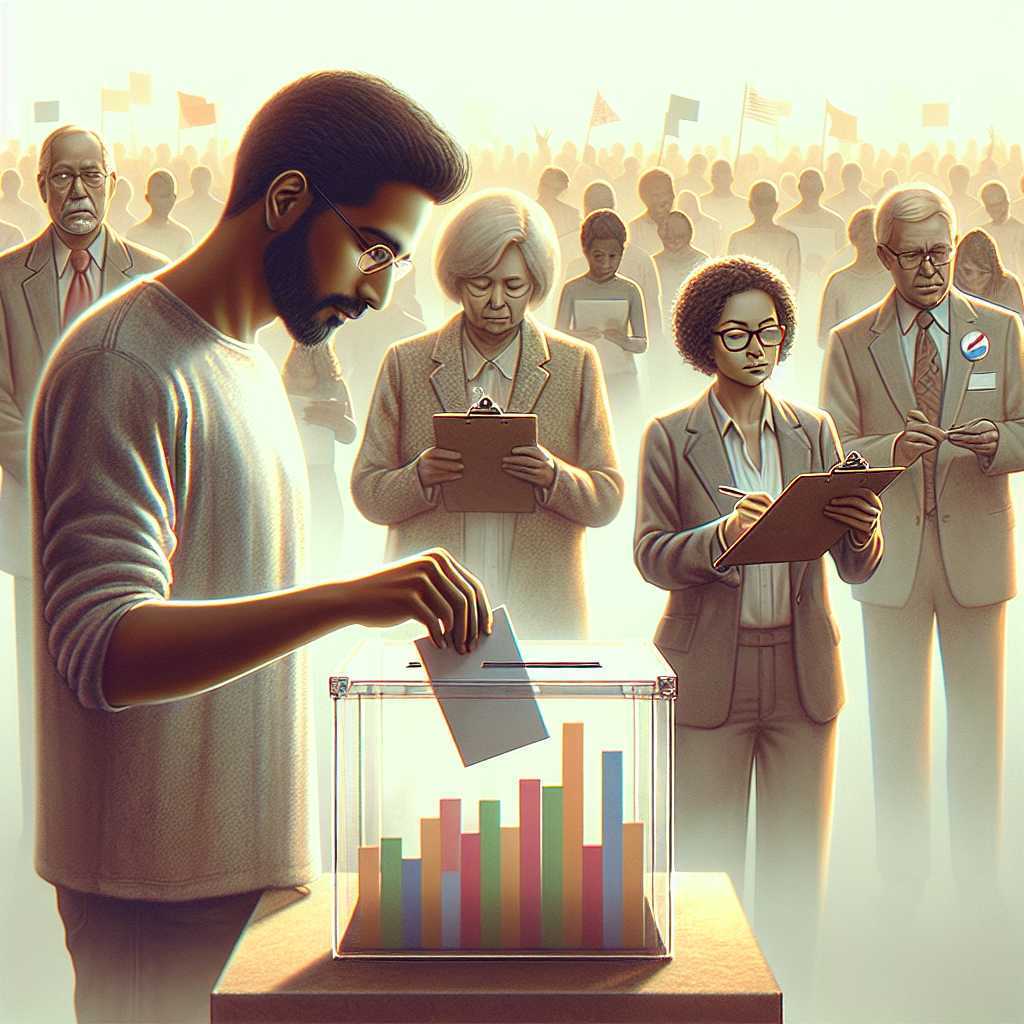Understanding Election Polls: The Science of Capturing Public Opinion
Election polls are a pivotal aspect of the electoral process, serving as a window into the prevailing public sentiment before voters cast their ballots. While they offer snapshots of potential outcomes and voter preferences, polls also influence public discourse, campaign strategies, and can even affect voter morale and turnout.
The Methodology Behind Election Polls
Pollsters use a variety of methodologies to gather data representative of the population. Samples must reflect different demographics such as age, gender, ethnicity, and geographic location. Two common types of polls are:
–
Opinion Polls : These aim to gauge the public sentiment on candidates, issues, or both by asking respondents whom they would vote for if the election were held at the time of the poll.
– Exit Polls : Conducted right after voters leave polling stations, these are aimed at determining patterns in voting behavior and can provide insights into the outcome before official results are released.
–
Exit Polls : Conducted right after voters leave polling stations, these are aimed at determining patterns in voting behavior and can provide insights into the outcome before official results are released.
Sampling techniques are crucial to reliability. A random sample ensures that each member of a population has an equal chance of being selected, minimizing biases.
Major Polling Techniques
–
Telephone Surveys : Historically the most common form means random digits dialing. However, the emergence of mobile phones and caller ID has made this method more challenging.
– Online Panels : Recruiting a large number of diverse individuals online to answer polls periodically.
– Mail-In Surveys : Less common due to slow turnaround but valuable in reaching demographics less accessible through other means. Polling Accuracy and Margin of Error
–
Online Panels : Recruiting a large number of diverse individuals online to answer polls periodically.
– Mail-In Surveys : Less common due to slow turnaround but valuable in reaching demographics less accessible through other means. Polling Accuracy and Margin of Error
–
Mail-In Surveys : Less common due to slow turnaround but valuable in reaching demographics less accessible through other means. Polling Accuracy and Margin of Error
Polling Accuracy and Margin of Error
Every poll has a margin of error which acknowledges that not every poll can be 100% accurate due to sample size or unexpected voter behavior. A +-3% margin is normal, meaning that a candidate polling at 50% could actually be receiving support from 47%-53% of voters.
The Role of Social Desirability Bias
Social desirability bias is when respondents answer questions in a manner that portrays them favorably rather than truthfully. In elections, this can skew polls as individuals may not wish to endorse a polarizing candidate publicly even though they support them privately.
The Power and Pitfalls of Election Prophecy
Polls guide campaign strategies as they indicate where candidates should concentrate efforts or adjust messaging. Conversely, perceived leads in polls may result in complacency among voters who support the leading candidate, ultimately impacting actual turnout.
However, reliance on polls can have pitfalls. Discrepancies between polls and actual results, such as famously seen in the U.S. 2016 presidential election, have raised questions about the current state of polling methodology amid changing patterns in communication technology and social behavior.
Public Perception and Impact on Voter Behavior
The publication of election polls can affect how citizens see a race: from developing perceptions of viability or electability for a candidate to influencing whether they consider their vote as potentially decisive or redundant.
Monitoring and Regulation
Regulatory bodies often exist to ensure that polling organizations adhere to ethical standards and methodological rigor; however, there is also debate over pre-election “blackout periods,” during which poll results are not published to ensure they do not influence voting decisions.
